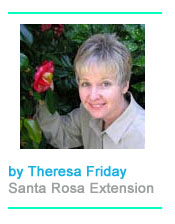Plan Now For Winter Landscape Color
October 17, 2010
 Even though our landscape may be full of rich colors now, it’s time to start thinking about what it will look like in late winter and early spring. Many of our summer flowering annuals are at the end of their life and will be gone with the first frost. Unless you plan now, you may find your winter landscape as dull as a cold winter day.
Even though our landscape may be full of rich colors now, it’s time to start thinking about what it will look like in late winter and early spring. Many of our summer flowering annuals are at the end of their life and will be gone with the first frost. Unless you plan now, you may find your winter landscape as dull as a cold winter day.
Trees and shrubs are somewhat permanent members of our yards. An annual is defined as a plant that produces flowers and seeds within one growing season and then dies. Their purpose is to provide much desired landscape color.
Most cool-season annuals are planted October through November, but we can continue planting into December, January and even February. Most plants will last until April or May if they’re cared for properly.
Bed preparation
Most flowering annual plants will need a well-drained fertile soil. Adding abundant organic matter will help enrich our typically sandy soils in Northwest Florida.
If drainage is a problem, raise the bed. Commercial landscapers plant flowering annuals on beds raised 6 to 12 inches above the surrounding soil. This assures good drainage and improves visibility. When re-planting old beds, remove old mulch to avoid plant diseases. Top new beds with 4 inches of organic matter (such as compost), and work it into the bed about a foot deep.
Annuals differ in sun and shade requirements. Generally, they thrive best in areas that receive sunlight during much of the day. Locate the bed in areas that meet the light requirements of the plants. Remember that soil pH is important for bedding plants. The recommended pH for most bedding plants is 5.4-6.8. Modify soil pH according to soil test recommendations.
Pansies
No other cool-season bedding plant comes close to pansies in popularity. Don’t plant pansies too early in the fall; it’s probably best to wait until we have our first cold snap.
Numerous flower colors and patterns are available. Plant solid colors in masses for the best visual effect.
 Pansies are heavy feeders and will not perform as well without sufficient fertilizer. Apply a small amount of fertilizer at planting and then again in January. If you’d rather, you may mix a teaspoon of slow-release fertilizer into the soil in each hole as you plant them, and you shouldn’t need to apply more fertilizer later. Alternately, you can fertilize once or twice a month with a soluble fertilizer using a hose-end sprayer.
Pansies are heavy feeders and will not perform as well without sufficient fertilizer. Apply a small amount of fertilizer at planting and then again in January. If you’d rather, you may mix a teaspoon of slow-release fertilizer into the soil in each hole as you plant them, and you shouldn’t need to apply more fertilizer later. Alternately, you can fertilize once or twice a month with a soluble fertilizer using a hose-end sprayer.
The pansies you plant now should last until April or early May of next year. To encourage continued flowering over a longer period, pinch off faded flowers if you can.
Snapdragons
Snapdragons are cool season bedding plants that have good flowering performance in late winter and early spring. Plant in full sun, although snapdragons can tolerate some limited afternoon shade.
Tall, medium and short cultivars are available. The tall types are two to three feet tall, the intermediates are one to two feet tall, the bedding types are six to fifteen inches tall, and the rock garden hybrids are about six inches tall
Dianthus
Dianthus have become one of the most reliable cool season bedding plants. They require a slightly higher pH than some other bedding plants. Plant dianthus in full sun. Flower color will be good through the late fall and winter, but the spring flower performance is excellent.
For more information on annual bedding plants, read the University of Florida online publication at http://edis.ifas.ufl.edu/mg319 or call your local Extension Agent.
Theresa Friday is the Residential Horticulture Extension Agent for Santa Rosa County.. Photo credit - David Marshall.



Comments